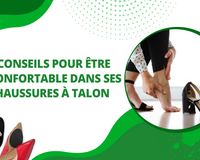
Metatarsalgia is known as inflammation and pain caused by the compression of the nerves between the metatarsal bones of the feetwhich make up the forefoot. However, the injury can also occur as a result of overloading the head of the metatarsal bones.
But in any case, during a long walk or excessive activity such as running, the pain caused by injury can also become more intense in this area of the foot.
Metatarsalgia and its most frequent symptoms

Typically, patients suffering from the immense pain caused by metatarsalgia feel it in the forefoot, most often in the plantar region, which is usually confused with plantar fasciitis, but can also appear in the dorsal region of the foot.
However, the symptoms of metatarsalgia may include, among others:
- Intense, intense or continuous pain in the sole of the foot and/or the part of the sole just behind the toes;
- Pain that worsens as you stand, bend your foot, run or walk, especially barefoot on a hard surface, and may improve when you rest.
- Stabbing or sharp pain, numbness or tingling in the toes.
- A strong sensation of having a pebble in your shoe.
- Etc...
However, it is very important to know that symptoms can increase with walking and standing at the end of a working day, for example. But generally, they do not cause pain at rest.
However, metatarsalgia sufferers may try to shift their weight onto the leg that doesn't hurt, or walk incorrectly because of the intense pain they feel. Over time, however, this compensation can lead to the onset of other symptoms, such as back pain.
What causes metatarsalgia?

As a reminder, metatarsalgia pain is rarely caused by a single factor. In fact, in most cases, this plantar pathology is the result of a combination of causes which, more often than not, can be very different from one another.
Some of the most common causes of metatarsalgia include:
- Unsuitable footwear.
- Being overweight.
- Aging.
- Foot deformities (claw toe, hollow foot, hallux valgus or hammertoe).
- Excessive or inappropriate sports such as running.
- Infections such as septic arthritis.
- Diabetes, which generally causes foot ulcers.
- Rheumatic diseases such as gout or rheumatoid arthritis.
Factors that can lead to metatarsalgia

The main causes or risk factors that can lead to the onset of metatarsalgia are :
- Advanced age: due to physiological aging of tissues and bones.
- Overweight and obesity: because of their excessive load on the foot, but also on the ankle, knees and spinal column, they generate stresses that can lead to metatarsalgia.
- Women: Women are essentially more susceptible to hallux valgus, and often wear high-heeled, narrow-toed shoes that exert excessive mechanical stress on the forefoot.
- These shoes are not very ergonomic and are uncomfortable on rough, hard terrain.
- Anatomical foot deformities such as clubfoot, claw toes or abnormal length of the metatarsal radii.
- Mechano-functional deformities that have long-term repercussions on all the osteo-articular structures of the upper and lower limbs.
- Competitive sports.
Types of treatment for metatarsalgia

Like Morton's or Civinini-Morton's neuromaThere are many foot pathologies that can cause symptoms similar to those of metatarsalgia. However, there are several options for treating the pain caused by metatarsalgia.
Natural treatment of metatarsalgia

Metatarsalgia is a very common foot ailment that can easily be treated using natural remedies. Yes, there are effective natural remedies for the treatment of metatarsalgia. These include
- Green clay, which helps reduce pain.
- Essential oils, which can be massaged in four to six times a day.
- Osteopathy to decompress interosseous nerves.
Metatarsalgia: Grandma's remedy
If you're a senior citizen and curious about how to treat metatarsalgia naturally, these remedies can help.
What's more, this natural treatment is suitable for both men and women. The same applies to grandmothers suffering from metatarsalgia.
Medical treatment for metatarsalgia
To alleviate the pain caused by metatarsalgia, a visit to a doctor or podiatrist may prove useful, as they can advise you to :
- choosing the right orthopedic shoe for metatarsalgia
- Use custom-made orthopedic insoles for metatarsalgia
- Take part in physical activities and sports that do not require significant mechanical stress on the foot, such as swimming.
- Functionally rest the affected foot by keeping it off the ground during the day.
- Eat a healthy, balanced diet to prevent/treat overweight and obesity.
- Have a pedicure to treat plantar calluses, which are often very painful.
Footwear for metatarsalgia: a solution to pain?
If you're wondering what shoe for metatarsalgia it's important to know that the treatment of metatarsalgia consists of wearing appropriate footwear. Shoes that are too loose, too tight, too high or too low can actually aggravate your problem.
However, it's very important to understand that there are many different causes of metatarsalgia, so it's vital to consult a podiatrist to determine the cause of your pain and obtain the appropriate treatment.
Orthopedic insoles for metatarsalgia

Like shoes for metatarsalgia, theorthopedic insoles are an excellent way to alleviate the pain caused by metatarsalgia. These orthopedic insoles can provide support and support and cushioning to the arch of the foot, reducing pressure and pain in this area.
Generally, my orthotics for metatarsalgia are made of a combination of foam and gel, which allows them to absorb shock and reduce the pain caused by metatarsalgia.
Physiotherapy: an effective treatment for metatarsalgia
Physiotherapy! Yes, it's also a form of physical therapy that helps improve foot mobility and reduce forefoot pain.
Generally recommended for people suffering from metatarsalgia-related pain, physiotherapy also helps to reduce inflammation and improve flexibility of your foot. It is therefore very important to consult a health professional or podiatrist for this form of treatment, as certain exercises should not be performed without proper advice.
Treatment or surgery for metatarsalgia
It's good to know that metatarsalgia can be treated by the use of specific orthoses and the administration of anti-inflammatory drugs in cases of less severe pain. However, in the most extreme cases, it may be necessary to surgery to correct the cause and re-establish a normal biomechanical balance, thus putting an end to metatarsalgia.
Often associated with the correction of hallux valgus and/or hammertoes, surgery will consist of a series of small osteotomies of one or more metatarsals, performed through one or two small incisions at the back of the foot.
In this way, the osteotomies are finally fixed with a small screw which, once fully embedded in the bone, will not be removed. In this way, the surgeon who performs the operation restores the correct position of the metatarsal heads, eliminating the cause of the pain caused by metatarsalgia.
So, in more detail, the two most common types of surgery for metatarsalgia are osteotomy and osteotomy osteotomy.
- Minimally invasive surgery involves making a small hole in the osteotomy of the metatarsal bone. The purpose of the hole is to eliminate pre-existing functional overload and allow the bone to heal in the correct position.
- The osteotomy osteotomy involves cutting one or more metatarsal heads with a screw and repositioning them to distribute weight more evenly. This procedure is often used to treat metatarsalgia, as it reduces pressure on the affected area and relieves symptoms.
What anti-inflammatory medication should be prescribed for metatarsalgia?
From a symptomatic point of view, anti-inflammatory drugs such as NSAIDs. They can be taken orally, in the form of gels or ointments, or by mouth. intravenously or intramuscular route.
How to relieve the pain of metatarsalgia?

Without a doubt, the use of custom-made orthopedic insoles is undoubtedly the most immediate and effective remedy for metatarsalgia pain. Their purpose is to lift the metatarsal heads and only reduce the pressure under the sole.
Logically, this solution is the least invasive but at the same time the most effective. However, when these orthopedic insoles for metatarsalgia aren't enough, the only solution left is an operation. surgery to realign the metatarsals. and restore the foot's proper support on the ground.
What are the complications of metatarsalgia?
For those who didn't know it before, poorly treated or neglected metatarsalgia can lead to worsening pain in the affected foot and/or the onset of back or hip problems.
How can metatarsalgia be prevented?

In order to prevent metatarsalgia, it is advisable to follow a few good practices such as :
- Wearing appropriate footwearComfortable, cushioned shoes play a decisive role. It's a good idea to choose a pair of shoes that's adapted to your feet (especially if you're planning to start a sport like running, or if you're a medium-high level athlete).
- Use adapted orthotics or shock-absorbing insoles: here, orthotics reshape feet affected by particular deformities, while insoles reduce the effects of impact with the ground.
- Losing excess weight: Finally, shedding excess kilos reduces the load on the lower limbs, particularly the feet, ankles and knees.
- What's more, sports enthusiasts are advised to stretch their feet before starting their workout, especially in competitive sports.
Conclusion
Metatarsalgia is pain that can occur in the toes or metatarsals. This pathology is often caused by poor posture or excessive pressure and can lead to symptoms such as loss of mobility, pain or swelling.
Fortunately, there are a number of ways to treat the pain caused by metatarsalgia, including the use of orthopedic shoes and insoles specially designed to relieve metatarsalgiaThese include the use of orthopedic shoes and insoles specially designed to relieve metatarsalgia, physiotherapy to improve posture and strengthen foot muscles, and surgical procedures such as Weil osteotomy and/or minimally invasive osteotomy.









